SQL in Ignition
Leveraging Databases
In addition to all the normal HMI functionality you would expect, Ignition has the ability to connect to databases, and this can greatly increase the functionality available to you! You can use databases to store history, create easy to search lists and configurations, and retrieve data from ERP or other systems. When you start using SQL, you can expand your project from a simple HMI to a project that brings your whole process together. The best part is that Ignition connects to as many databases as you want, all from one central location. Because the database lives outside of Ignition, we don't maintain any control or rules over what you can do with your data.
Displaying Data
You can easily display information from your databases on a window along with anything else in Ignition. You can show parts lists, step sequences, realtime or historical charts, add the ability to search for inventory, or anything else you can think of.
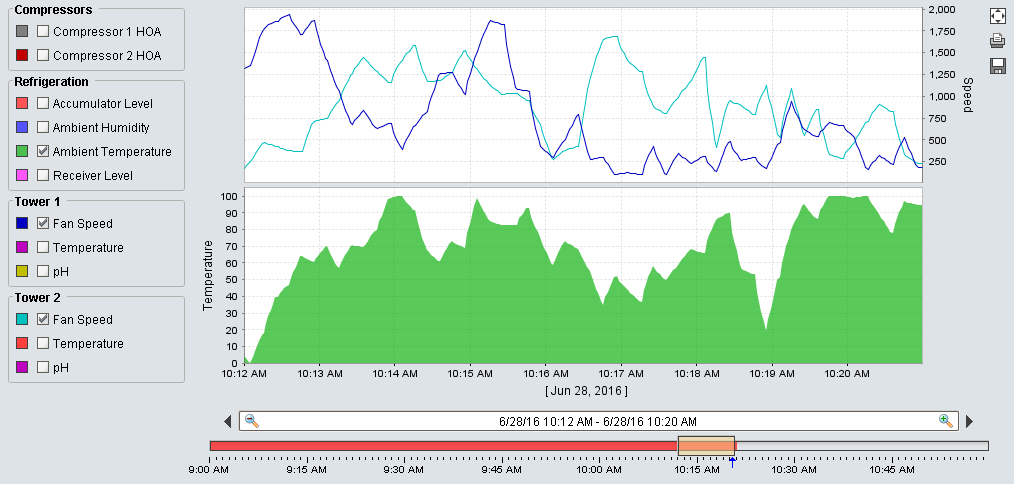
What is SQL?
SQL stands for "Structured Query Language" and is the backbone of most modern relational databases. It's often referred to as "S.Q.L." or "Sequel," but both are correct and widely recognized. This language (different than the Python Scripting Language) allows you to write out requests or "queries" against the existing data to view, add, edit, or remove the information you want in a simple format.
Everything in a relational database is based around tables. Tables store the basic information for any system and can be combined together to make very efficient queries to retrieve your data.
SQL Queries
SQL queries are crucial to Ignition's database-centric model. Queries can show what is available or alter data in the databases, and some companies have positions just dedicated to running databases and creating queries. Anywhere Ignition is fetching data, you can choose to use your own custom queries to get exactly what you want out of the database. You can make your queries as simple or complex as you like. If your database is large, you might have a whole team dedicated to creating these queries for you and Ignition will happily execute them.
SELECT * FROM mytable
SELECT users.id, users.firstname, users.lastname, roles.name as 'rolename'
FROM users
INNER JOIN mapping ON users.id = mapping.userid
INNER JOIN roles ON mapping.roleid = roles.id
WHERE roles.name = 'Administrator'
Database Connections
Any SQL query you use needs a Database connection, but Ignition simplifies all that by creating database connections in the Gateway instead of in the clients. This means from one central location you can manage all your database connections, and you don't have to worry about planning around adding clients in the future. Any special rules or connection restrictions are taken care of in the Gateway.
Using SQL in Ignition
There are many types of queries, and many ways to use them in Ignition. Some provide an easy to use builder to automatically store or fetch data, and some allow you to completely customize your queries.
Queries in Bindings Ignition's binding system offers a lot of flexibility in how database data can be used in a binding. The Named Query binding allows you to select one of the Named Queries that were previously built for that project, offering a very secure method of pulling data from the database. The DB Browse builder provides an interface that will build the query based on the data in the table that was selected. This allows even users with little SQL knowledge to pull data from the database. Finally, the SQL Query option will accept a straight query, so that a query specific to that binding can be written directly in the binding. When binding to a basic (non-dataset) data type, you can use the Writeback feature directly to send any changes back to the database.
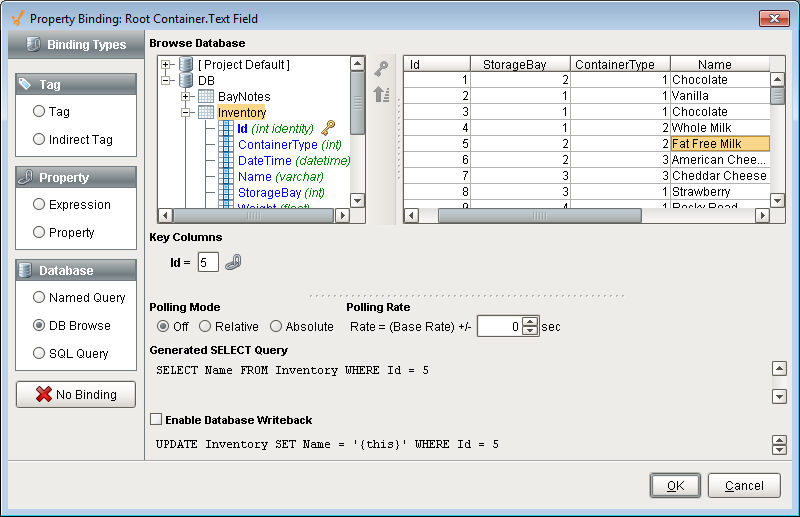
Queries in Scripting
Ignition offers a number of built-in scripting functions for you to use to query your databases. This makes it very simple to view data, create dynamic scripts that use real data, and more. You can pull individual pieces of information, return whole tables of data, or update your database directly. Depending on the type of query and the sort of results you want, you will use different functions. The following functions are the ones you will use most, and all of them can use a special placeholder (?) to allow for dynamic query building.
| Scripting Function | Description |
|---|---|
| system.db.runNamedQuery() | Used to run a previously setup Named Query from within a script. |
| system.db.runPrepQuery() | Used to run basic SELECT queries to fetch whole datasets. This can be used to populate tables, or to sift through the data to do your own calculations. |
| system.db.runPrepUpdate() | Used to run queries that change the data in the database. Usually used on input form windows to update your database records. |
| system.db.runScalarPrepQuery() | Used when you want only one value from your results. Perfect for fetching a single value like the highest ID, or first timestamp of a result set. |
Each of the different functions takes in different arguments (values) and provides slightly different options and functionality. For example, the runPrepUpdate() can return the auto-generated key from insert queries. This can be extremely helpful and eliminate the need to hit the database multiple times if you are using linked tables.
You can find examples of each of these and all the other database functions in the system.db section of the appendix.
Queries in Tags
Ignition offers Query Tags, which can run queries and return the result as a Tag value, giving all of the projects in the Gateway access to the same Database values.
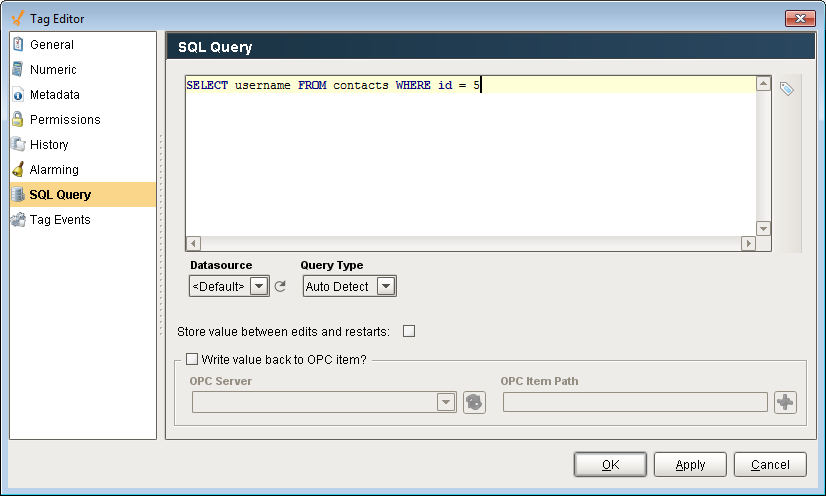
Queries in Reports
You can leverage queries to access data from all database connections to create rich reports, from simple data logging to complex reports with grouped charts and datasets.
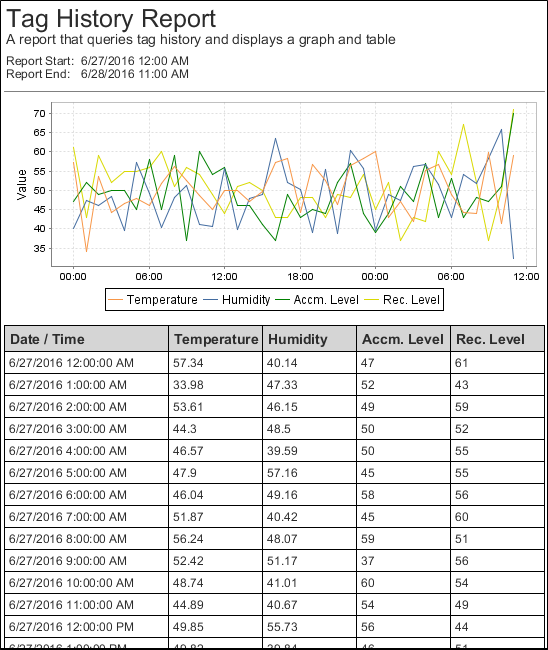
Queries in Transaction Groups
While Transaction Groups are great at storing Tag data to a Database automatically, the built-in Expression Items can execute a SQL Query within the Transaction Group.
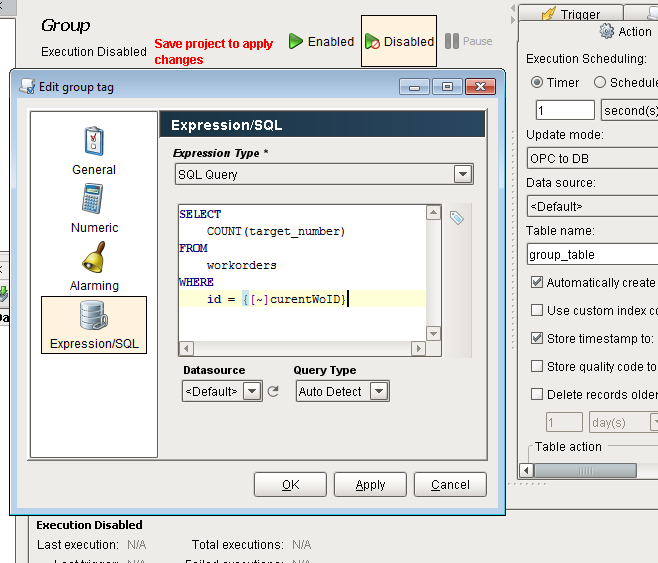
Database Query Browser
The Database Query Browser offers an easy to use environment to run queries in for testing. Here, queries can be tested to figure out what values get returned, or data can be updated through raw queries, or the Database Query Browsers easy to use GUI editor.
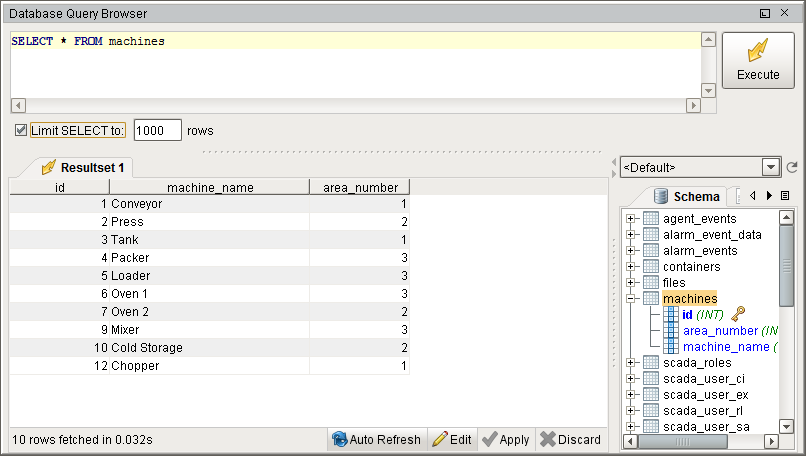
Auto Generated Queries
Many systems within Ignition utilize a database connection, but the queries that are executed are constructed automatically by the system and do not require you to build the queries manually. These systems such as the Tag Historian, the Alarm Journal, or the Database User Source are very easy to setup and use since each system will automatically generate the necessary tables in the database, insert the relevant data, and even has prebuilt tools to extract the data. However, it is important to note that while these systems can automatically generate queries for you using the various components, these systems are simply storing data in a database which you can manually query out by building your own SQL queries.